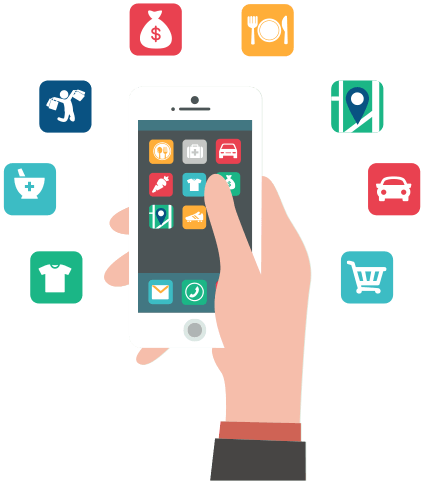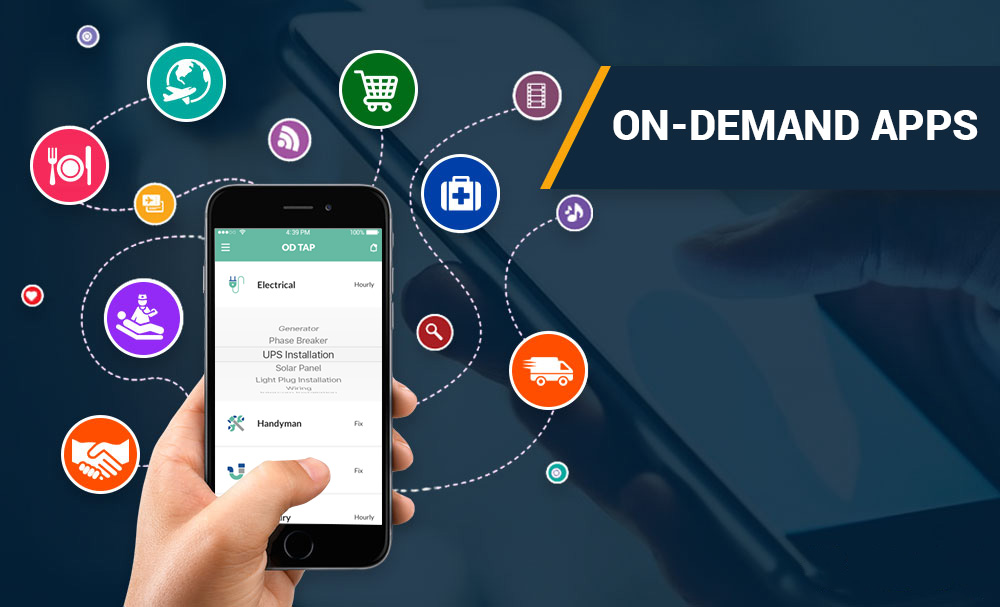Quick Look at On-Demand Apps.
On-demand apps almost came as a movement in the digital world and transformed the way we avail services and ready-to-use business deliverables. -E-commerce stores like Amazon and eBay were the first on-demand apps and over time the business model penetrated across other niches. Now, from booking a taxi ride online to booking food delivery to booking accommodation in a distant city, on-demand apps are making spaces for every different customer interaction. But before taking a look into the future of on-demand e-commerce, it is essential to understand the evolution of the on-demand apps in recent years.

- Mobile-push for change: Already mobile search has surpassed desktop search in both volume and frequency. Moreover, mobile has become a lifestyle factor allowing instant access to services and contents. It is a mobile device’s round the clock connectivity and ease of keeping in constant touch that has made it a key to the thriving on-demand economy.
- Overwhelming Social Media penetration: The penetration of social media across all spheres of life has helped people staying connected while communicating almost on anything and everything, giving businesses a never-before opportunity to cater to the customer demands.
- Addressing value as well as a convenience: With the proliferation of on-demand apps, we can see two gross categories of consumers- the value-oriented and the convenience-oriented consumers. Besides giving priority to more value at a lesser cost, the on-demand apps are now facilitating more convenient and timely delivery of products.
- Frictionless business process: Allowing easy and smooth purchase with least friction in the business process has become the subject of demand for most consumers. Frictionless and smooth customer experience and delivery are the two most important criteria that on-demand apps fulfill.
How on-Demand apps are transforming the face of business?
The on-demand economy is experiencing a never-before boom and there are too many examples of how it has transformed businesses. The emergence of Uber and Airbnb is an excellent example of how on-demand apps deliver popular service for several daily needs. Just as Uber transformed the way we think of transport, Airbnb transformed the way we conceive booking accommodations and hotels in places of travel. Similarly, apps like Swiggy, Just Eat and Uber Eats are continuing to change the way we order foods from restaurants and food chains. The same business model is slowly penetrating across other niches and products. From the daily consumable goods to the groceries, now almost everything is being delivered through on-demand apps to our doorstep.
The Future of On-demand eCommerce Apps

The future of the on-demand e-commerce apps will mainly revolve around new concepts. And breakthrough ideas of providing customers more ease and convenience. From gesture-based checkout and payment processing to product search through images to video chat, a lot of breakthrough features will shape the future of on-demand e-commerce apps.
Conversational Marketing
Unlike the conventional marketing channels that follow the one-way directive, in the new era of on-demand e-commerce apps, conversational marketing will play a bigger role. From intelligent Chatbots to real-time video chat communication, we have a lot of avenues to utilise conversational marketing methods.
Image-Based Product Search
By integrating image search technology with the e-commerce interfaces customers can be provided with an easy and effortless ways of searching for products online. They can take photos of nearby objects and can search for those items across e-commerce stores.
Real-time Shopping Apps
What about getting access to products just when and where you need them? Well, such ease of shopping in real-time may not be a distant thing of the future. Thanks to real-time shopping apps. Just when you need a particular product, you can shop it then and there and based upon availability, the order can be accepted and delivered from the nearest store in time.
Gesture-Based Login
Biometrics is already part and parcel of smart user experience. Gestures are also used in the latest mobile handsets for login and authentication. So, those days are not far when the gestures will be used for customer login and authentication in the e-commerce store. This will make the entire shopping experience easier, effortless and least time-consuming.
